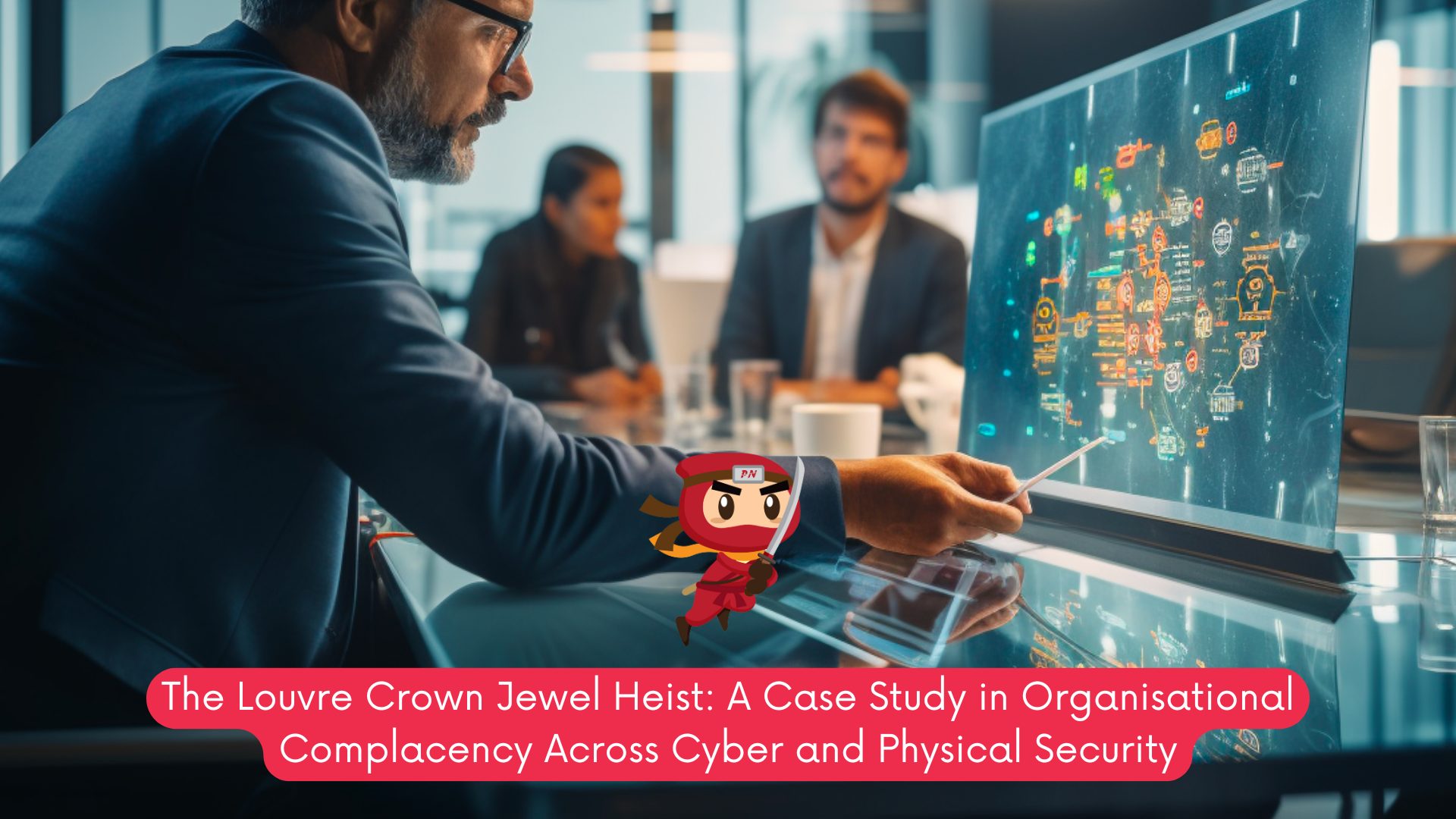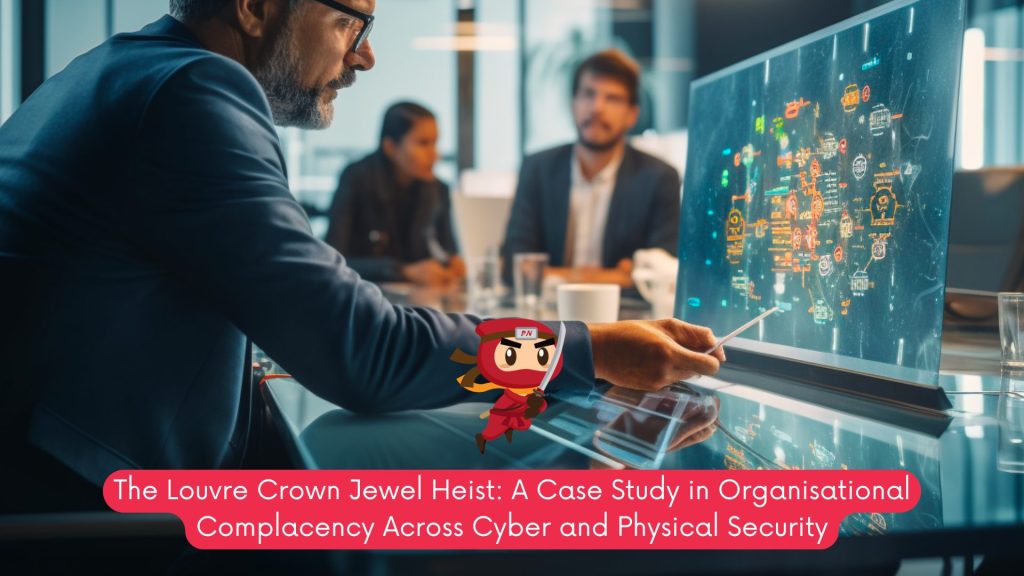KEEP IN TOUCH
Subscribe to our mailing list to get free tips on Data Protection and Cybersecurity updates weekly!







On 19 October 2025, the world witnessed a scene that looked like it belonged in a Hollywood script — the theft of the Louvre’s crown jewels in broad daylight.
Most expected such an institution to be impenetrable. But the more details surfaced, the clearer it became: the heist succeeded not because of innovation, but because of complacency.
A mix of outdated systems, unaddressed audit findings, and security blind spots created the perfect environment for an 8-minute operation that bypassed one of the world’s most iconic museums.
A decade before the heist, a 2014 audit had already flagged several serious concerns:
These were not theoretical risks. They were recorded, documented, and known — but left unaddressed.
After the heist, another audit revealed deeper structural issues:
This is a pattern seen across many organisations — investments flow to what is visible, not what is critical.
Using a tactic commonly observed in red-team and adversarial simulations, four individuals arrived dressed as construction workers.
No forced entry. No advanced cyber exploitation. Just exploitation of predictable human and procedural gaps.
The team used a lift, accessed a poorly monitored window, smashed display cases, and escaped with eight pieces of crown jewels in under eight minutes.
Even though alarms triggered as expected, the system’s limitations reduced its effectiveness:
Again — not a failure of technology, but of planning and prioritisation.
Here’s a lesser-known fact:
The Louvre was robbed twice in 1998.
Those incidents triggered a complete security overhaul at the time. But over 27 years, vigilance eroded. New priorities took over.
Security debt accumulated.
The 2025 heist wasn’t a surprise. It was a consequence.
Across industries, we see similar patterns:
The Louvre is not an outlier. It is a mirror held up to organisations everywhere.
Technical Measures
Governance Measures
Security is not a product. It is a culture.
The Louvre heist demonstrates one truth: Your security is only as strong as the gaps you haven’t addressed yet.
Network VAPT provides a realistic view of how attackers would approach your environment:
This is how you validate resilience — not on assumptions, but through evidence.
The 2025 Louvre heist wasn’t a product of innovation. It was the sum of unaddressed issues, delayed decisions, and misplaced priorities.
Every organisation has blind spots. Every organisation battles competing priorities. But only organisations that continuously test and reinforce their defences stay ahead.
If you want an objective assessment of where your real risks lie, a Network VAPT is the best place to start.
Assess your organisation’s complacency gaps. Speak to Privacy Ninja about conducting a Network VAPT to test your actual security posture — before someone else does.